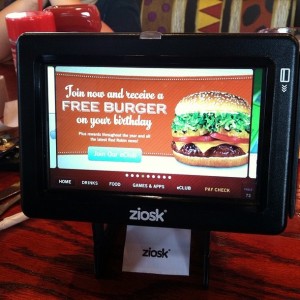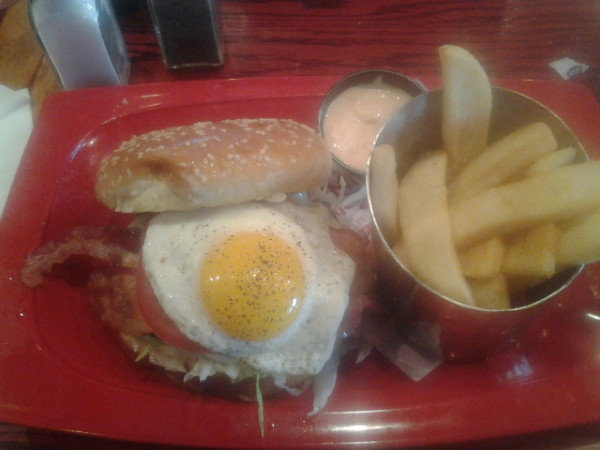The other night we celebrated my son’s graduation from college by heading out to eat at one of the local Red Robin restaurants. Because it was a Saturday night, and because three local colleges had graduations that day. Plus, that Red Robin is right in the heart of the tourist area of Lancaster.
Busy.
Despite that, we got there at just the right time and were able to get a table rather quickly. At the table, we were greeted by a rather call tablet-like computer kiosk that gave us the chance to order beverages and appetizers, which would be delivered to the table. It also gave us the opportunity to join their email list, play games, and listen to music, if we so desired. Plus, at the end of the night, we were able to pay our bill right there.
I loved the convenience. But what I loved even more was the amazing customer service provided by our waitress, Lisa. From the time we got there to the time we left she was attentive and took care of everything for us. She even used the table-top kiosk to put our order in for appetizers. From my perspective, Red Robin has found the perfect way to use automation: it enhances the experience of human interaction without replacing it. And they’re not the only ones: Panera is trying something similar, as is Chili’s. In fact, more and more restaurants and other businesses are starting to think in terms of this kind of thing, with the use of what are known as Ziosks.
I’m not a fan of automation replacing human workers. That said, automation should be used to solve problems, not just for your own sake, but for your customer’s sake. If automation can speed up the process for your customers, and reduce errors, then it’s a wonderful thing. If it streamlines the system and improves customer experience, you’re on to something.
But if automation is just there to make things easier for you, and it interferes with customer experience, you need to think again.
With Red Robin, and I presume others, they’re not trying to get rid of staff. They’re trying to make things easier for both staff and customers, while saving time and reducing error. Our waitress was able to provide better customer service than most, because of how well the restaurant has integrated automation technology into its culture. In fact, I think she was more attentive and responsive than servers I’ve had at other restaurants. The kiosk freed her up to deliver food more quickly, and spend more time, not less, with her customers on a very busy day.
For automation to be effective, and worthwhile, there needs to be a human touch. In fact, automation should enhance the human interaction, not the other way around. For too many businesses, the humans are there just to maintain the automation. That’s backwards. ATM’s still haven’t replaced bank tellers and customer service representatives, as was feared. We still need those people.
Oh, and machines break down from time to time. I guess it’s their version of a sick day. And on those occasions, the humans are much more reliable.
Feel free to try it that way, and feel free to try to replace humans, but any successes you have will be short term.
Business is about people, on both ends of the equation. Use automated and computerized systems to supplement and enhance the great work of your staff, and you’ll gain a reputation for superior customer service and experience.
Oh, and for the record, we were so well pleased with the food and customer experience that we’re already talking about going back. And that’s lot for someone like me, who isn’t really a fan of chain restaurants, to say. And in case you were wondering, this was the bad boy I ate: the Royal Red Robin.

Read more at Business 2 Community
Ken Mueller is the proprietor of Inkling Media, with 30 years of experience in the media industry. Ken is an Inbound Marketing Certified Professional, after graduating from Inbound Marketing University with honors. He is also a certified Inbound Marketing Educator. He… View full profile